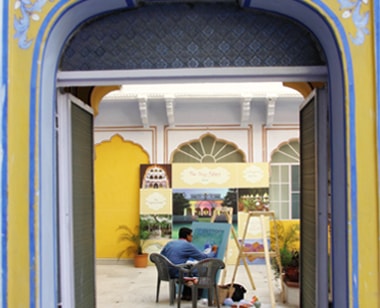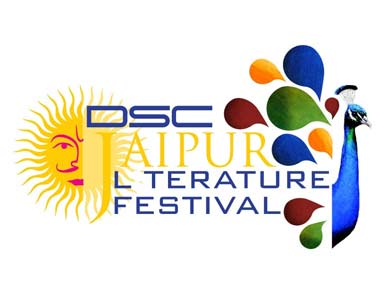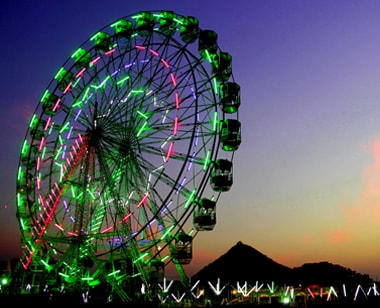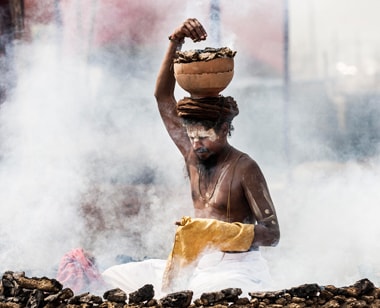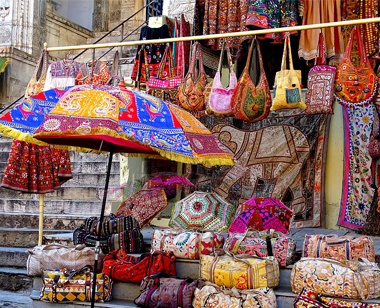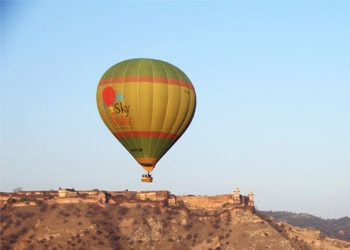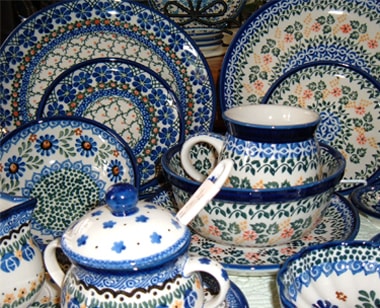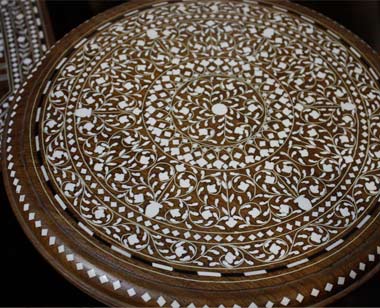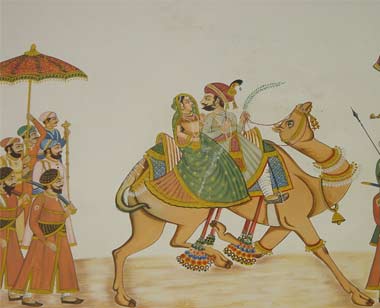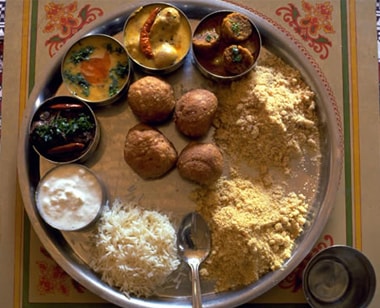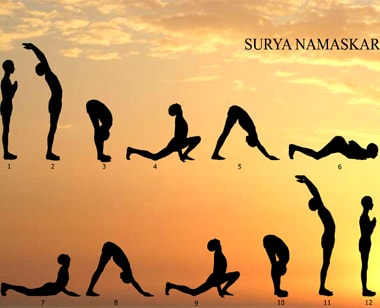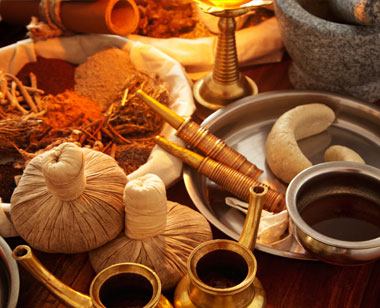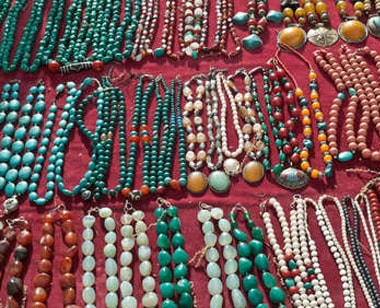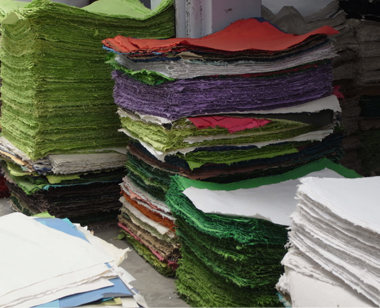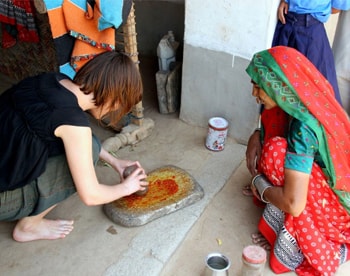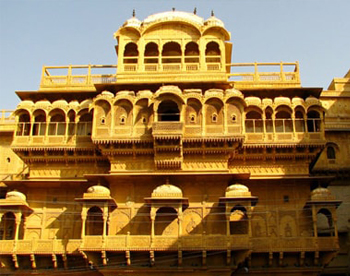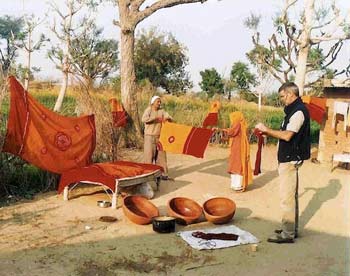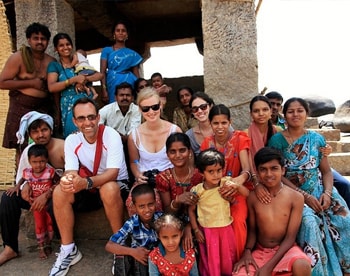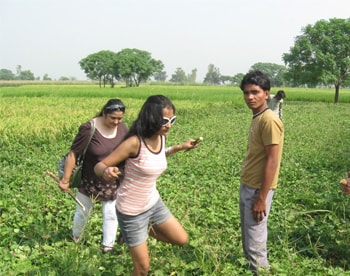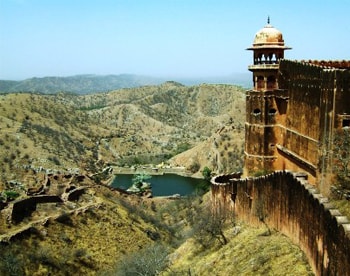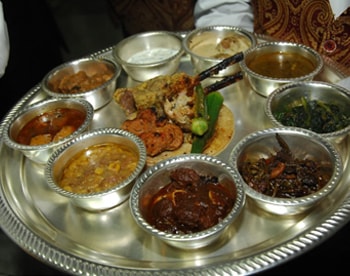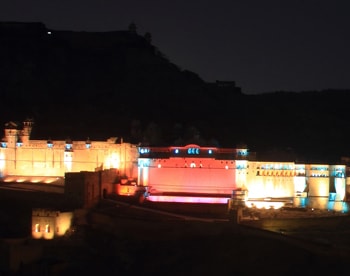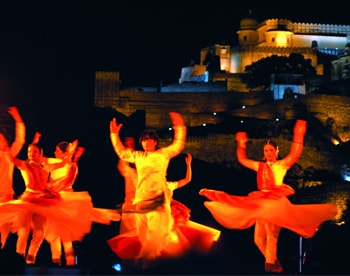Churu is a town in the desert region of Rajasthan state of India. It lies in the Thar Desert. The city of Churu was founded in 1620 by a Jat chieftain Churru. It was part of Jangladesh prior to annexation by Rathores.
It is famous for the shifting sand dunes of the Thar Desert and beautiful grand havelis with marvelous fresco paintings, namely Kanhaiya lal Bagla ki Haweli and Surana Haweli, with hundreds of small windows. It also has some fine Chhatris. Near the town is a religious seat of the Nath sect of Sadhus where there are life-size Marble statue of their deities and a place for prayers. There stands a Dharam Stup, a symbol of religious equality. At the center of the town is a fort built about 400 years ago.
Black Buck Santuary Tal Chhapar
Talchhapar Sanctuary, situated in Churu is famous for endangered black-buck. Other wild animals found in the sanctuary are chinkara, fox, juangle cat, rojra along with many resident and migratory birds. It lies on the way of migratory pass of many birds and therefore it is also popular with bird lovers. Talchhapar, actually a flat saline depression, has a unique ecosystem.
Talchhapar area was a game reservoir for the erstwhile Maharaja of Bikaner State and was declared a reserved area for the protection of wild animals and birds in the year 1962. Total area of Talchhapar Sanctuary is 719 hectare. The sanctuary area is mostly covered by grasses with a very few and sparse trees of Khejri, Salvadora, Ber, Ker and Neem. Main grasses found in the area are Sewan, Doob, Dhaman Lampla, Lana and Moth etc. The area gives a lush green look during rainy season but again dries up during summer season.
Chhatries (Cenotaph)
Churu has some good memorial domes, mostly raised to rich merchants, north of the town. Historically the most significant is ‘Aath Kambh Chhatri’ (Eight Pillar Dome) west of the vegetable market. Built in 1776 on a Rajput’s cremation site. Its base has been virtually buried by windblown sand. The interior is covered with murals, one detail depicting an early European mercenary on foot, bearing a musket. Further north are chhatris of the Mantri , Bagla and Lohia merchant families.
Dudhwa Khara
Just 36 kms from Churu It is an historical village which lies on Thar desert. The village has enticing topography and have huge beautifully designed havelis.One can enjoy the rural life and camel safaris in the village.
Gogaji
Gogaji also known as Gugga is a folk deity of Rajasthan state in India. He is an eminent warrior-hero of the region. Hindus and Muslims alike honor him. He is also venerated as a saint and even as ‘snake-god’. He is known as Goga among the Hindus and Jahar Peer among the Muslims.
Gogaji is popular as a snake-god and almost every village in Rajasthan has a Than (sacred place) dedicated to him.Rabari community in Gujarat and Rajasthan is great believer in Gogaji.
It is believed that Gogaji went into samadhi at Gogamedi. Thousands of devotees gather to pay homage at this memorial annually in the month of Bhadrapada during the Gogaji fair, which lasts for 3 days.The fair is held from the ninth day of the dark half of Bhadrapada (Goga Navami) to the eleventh day of the dark half of the same month.
Kanhaiyalal Bagla Haveli
Just south of the main bazaar, this haveli built around 1880 boasts the finest frieze in all the Shekhawati region. It illustrates Dhola and Maru on a camel fleeing the wicked Umra-Sumra, Sassi and Punu side by side on horseback, two set of lovers from folk tales. To the south-west is a mosque, Jama Masjid, and a little Muslim haveli decorated with non-figurative work.
Kothari and Surana Haveli
A group of handsome painted havelis built by two prominent Oswal Jain merchant families, the Kothari and Surana clans. Amongst them are ‘Malji Ka Kamra’ (Malji’s Haveli), an exotic stucco extravagaza built by Malaji Kothari around 1925 and the massive Surana Double Haveli, said to boast 1111 windows and doors built in the 1870s.
Mantri Haveli
The Mantri Haveli is one of the most beautifully designed Havelis in India. The Mantri Haveli, Churu reflects the rich grandeur and splendor of the Rajput era. One of the major tourist attractions of Rajasthan, the Mantri Haveli, Churu attracts tourists from all over to Rajasthan. The Mantri Haveli is truly a beautiful symbol of Rajput grandeur and beauty. In the Mantri Haveli, Churu you can get to see beautiful paintings and exquisite mirror work that brings travelers from all over.
Mantri Haveli, Churu was built in the 18th century and is completely covered with paintings. From exotic images to beautiful and unique silhouettes the paintings are simply a class apart. One of the oldest Havelis in Churu, the Mantri Haveli is an art gallery. Dedicated to one of the ministers of the royal family the Mantri Haveli in Churu attracts tourists for its beauty and uniqueness.
From floral swirls, motifs, and excellent mirror work, to balconies and alcoves, the exquisite artistry of the Rajputs are explicitly reflected in its artwork as well as architecture. From lavish ornamentation, spacious courtyards to sprawling areas, the Mantri Haveli, Churu attracts people from all over. However the front facade is completely worn out and you can feel the medieval aura and ambience once you enter inside the Mantri Haveli.
Ratangarh Fort
Ratangarh, The mammoth fort is an important attraction of the state, built in 1820 AD by the Raja of Bikaner- Ratan Singh, is situated on the Agra-Bikaner Highway. The market place is in the shape of a cross suggesting that the city was planned before construction. An array of stately havelis can be seen around the clock tower at the main crossing.
Ratannagar
It is famous for enormous “Havelis”.
The main havelis are : Champalal Sohanlal Hiralal Hirawat haveli, Bilas Rai Arjundas Kedia haveli, Chandi Prasad Kedia haveli, Laxminarayan Chandgothia haveli, Ganga Prasad Chandgothia haveli, Hari Charan, Dwarka Das, Basudev gadodia haveli, Mool Chand Poddar haveli and Jalan haveli. Raghunathji, Laxminarayanji and Chandgothia temples also decorated with beautiful wall paintings. The paintings in Godia ‘Chhatri’ is also worth seeing. Adjoining Ratannagar forest also covers the habitations of many wild animals.
Salasar Balaji
Salasar Balaji “Salasar houses the famous Balaji Temple” which attracts a large number of devotees from all over India. Shri Hanumanji, the famous Hindu deity of vigour and loyalty, having been pleased by the devotion and worship of Shri Mohan Das Mahraj, appeared in the form of a statue on Saturday, Shrawan Sukla Navami, V.S. 1811 at Asota village.
The statue was brought to Salasar where the temple was built. Later, the devotees added more buildings to the main temple. Two large fairs are held on Chaitra(April) and Ashwin purnimas(October) every year. Lacs of devotees from all over the country and abroad come and offer their wish before the great Hanumanji in the temple and have ‘Darshan’ of Shri Balaji throughout the year.
Sethani ka Johara
Some 3 km west by the Ratangarh road, a beautiful reservoir built by Bhagwan Das Bagla’s widow as a relief project during the terrible ‘Chhapan Akaal’, the Famine of 1956 V. Samvat (1899AD). The water attracts birds and mammals such as ‘Nilgai’ (blue bull – a large antelope.)
Other Places
Some Havelis(Mansion) : Seth S.S. Poddar Haveli, Seth Chand Mal Banthia Haveli, Seth Sagar Mal Hanut Mal Baid Haveli, Seth Chagan Lal Parakh Haveli, Seth Bajrang lal Manri Haveli, Buntia walon ki Haveli etc.
Some Temples : Jain Temple, Ganga Mata Temple, Satya Narain Temple, Ganesh Temple, Veer Hanuman Temple, Rani Sati Temple, Balaji Babosa Temple, Marda SatiI Temple, Shyam Temple, Ram Temple, Punchmukhi Balaji Temple, Shaniji Temple, Shitala Mata Temple, Icchapurna Balaji Temple, Gayatri Temple, Upahshara Jatiji etc.
Some Mosque : Idgah mosque, Jumma mosque, Madina mosque and Dargha Peer Sahib etc.
Near By Places : Ramgarh, Mahansar, Bissau, Mandawa, Mukandgarh, Fatehpur, Laxmangarh and Nawalgarh etc.
Religious Places : Nath ji ka Dhora(math), Shyam Vatika, Onkar Ashram Bhaninath Muth, Dharam Stupa, Shri Akshay Shakti dham – Ratangarh, Jiwani Sakati Ashram (Balaji Dham), Bhagwati Bhadrakali Shaktipeeth Ashram – Rajaldesar, Dandiswami Jogendrashram – Rajaldesar, Shiv Bhagwan ji ka Tiba, Mata ji ka Tiba.
Nagar Shree Museum, Churu Fort, Babosa murti sthal (65ft tall statue on DELHI RAJGARH HIGHWAY), Ghantaghar, Dakira Jhora, Sarvahitkarini Sabha Bhawan etc.
 +919828167660, +919414075013
+919828167660, +919414075013

